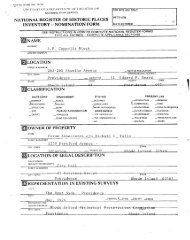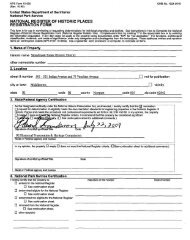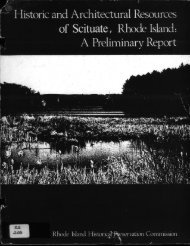1 Dr. Jonathan Prude, Emory University “The Great Transformation ...
1 Dr. Jonathan Prude, Emory University “The Great Transformation ...
1 Dr. Jonathan Prude, Emory University “The Great Transformation ...
You also want an ePaper? Increase the reach of your titles
YUMPU automatically turns print PDFs into web optimized ePapers that Google loves.
16as pay one dollar pr. day and board.” But I’d argue that these separate initiatives amounted to acollective strategy of transiency that involved men and women, adults and youngsters, and thatobliged factories to sweeten their deals to employees and burnish their reputations as attractiveplaces to work. “You may think [it] rather strange why I keep writing you” a worker wrote aSlater mill in these years, “the reason is that your place has been recommended to me as a goodone.” The resulting swirl of movement scarcely removed all the downsides of millwork. But withvoluntary turnover often approaching 50%, operatives effectively turned the corrosive impact oftransiency on pre-factory communities by now using movement to gain some fair leverage overtheir situations.All told, textile operatives in this era were probably less overtly militant than workers inthe more thoroughly male-dominated skilled trades confronting the recastings and (intheir view) diminishments of industrialization. But I’d suggest that the way textile operatives didassert themselves, and particularly their assertions-through-mobility, reveals a rather remarkablephenomenon. It reveals laborers in workplaces informed by few traditional norms of acceptableconditions demonstrating sufficient cooperation among one another, and sufficient creativity, todetermine for themselves what they wanted, or would tolerate, from their employers.This brings us to midcentury. Here the story changes. From midcentury into theearly 1900s there were, as I’m sure you know, new infusions of immigrants into the Northeast.Large numbers of Irish, French Canadian, and fresh streams of skilled English recruits pouredinto the industrial workplaces of southern New England, joining with native-born employees, tobegin forming what can truly be reckoned a permanent industrial labor force. Also in this period,southern New England saw the rise of major urban textile centers, like Fall River, andintermittent but unprecedentedly dramatic detonations of labor unrest. At the same time, ofcourse, there was the changing fortune of New England textiles as a whole. There were goodtimes and slow times. But overall textile manufacturing began winding down in the North, notleast in southern New England.















